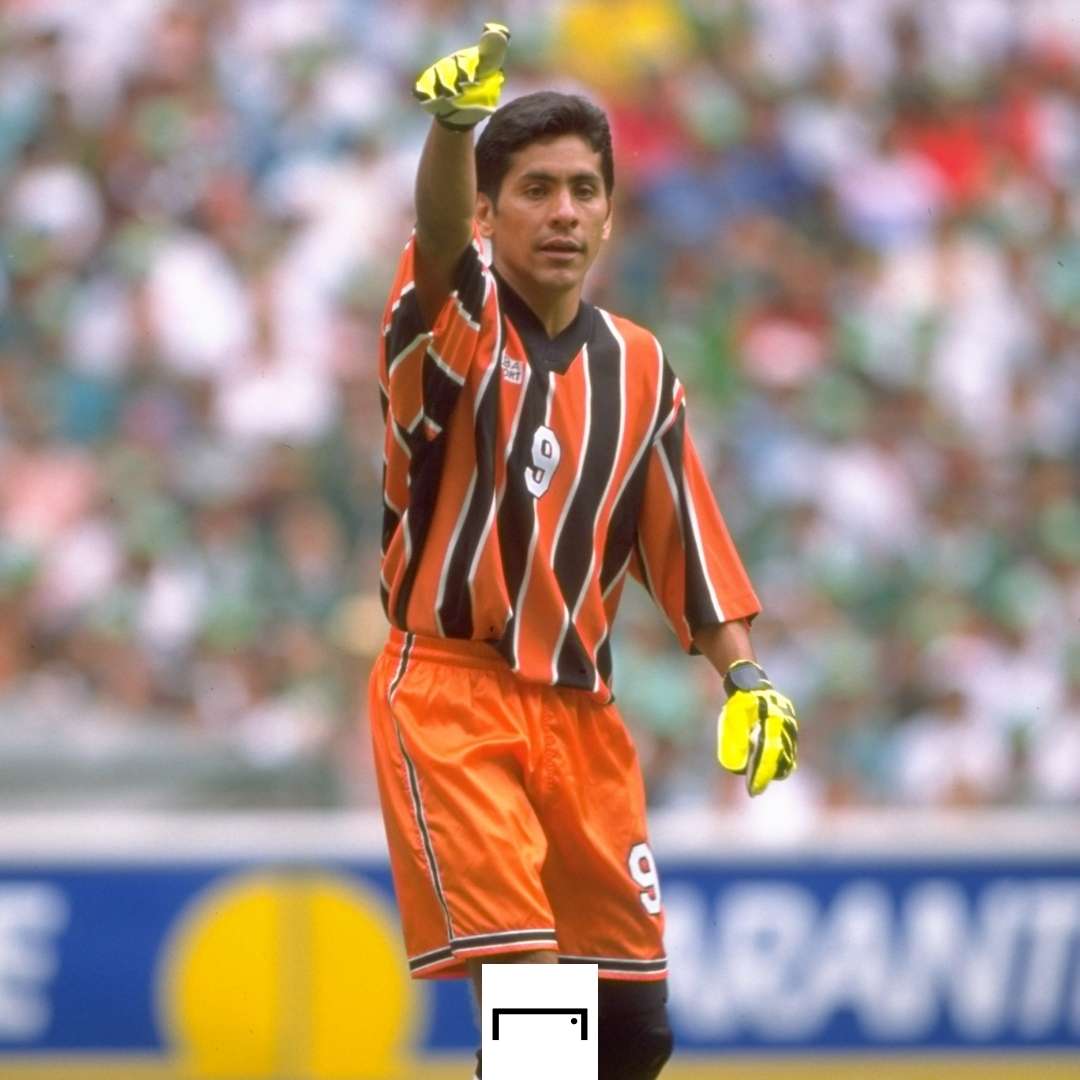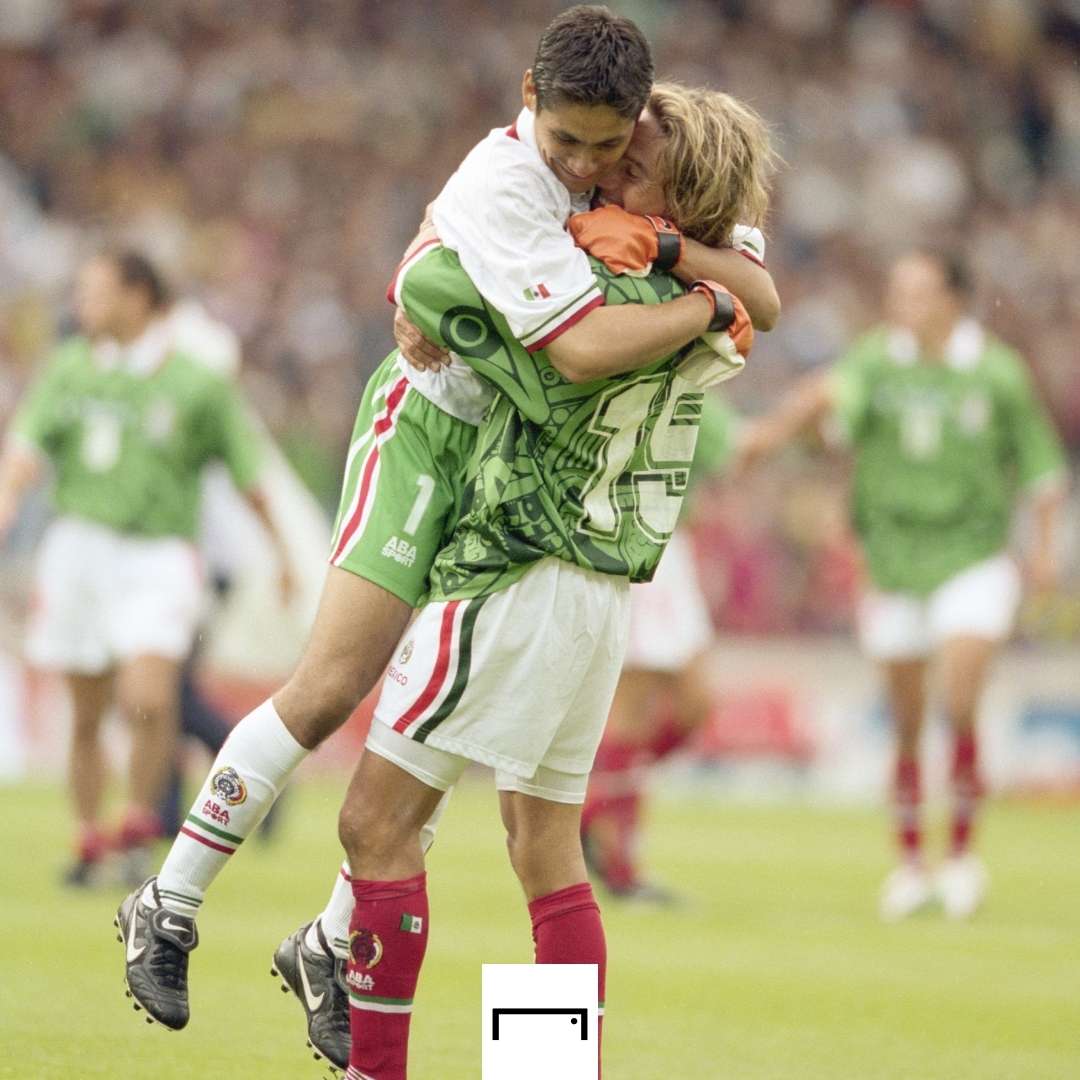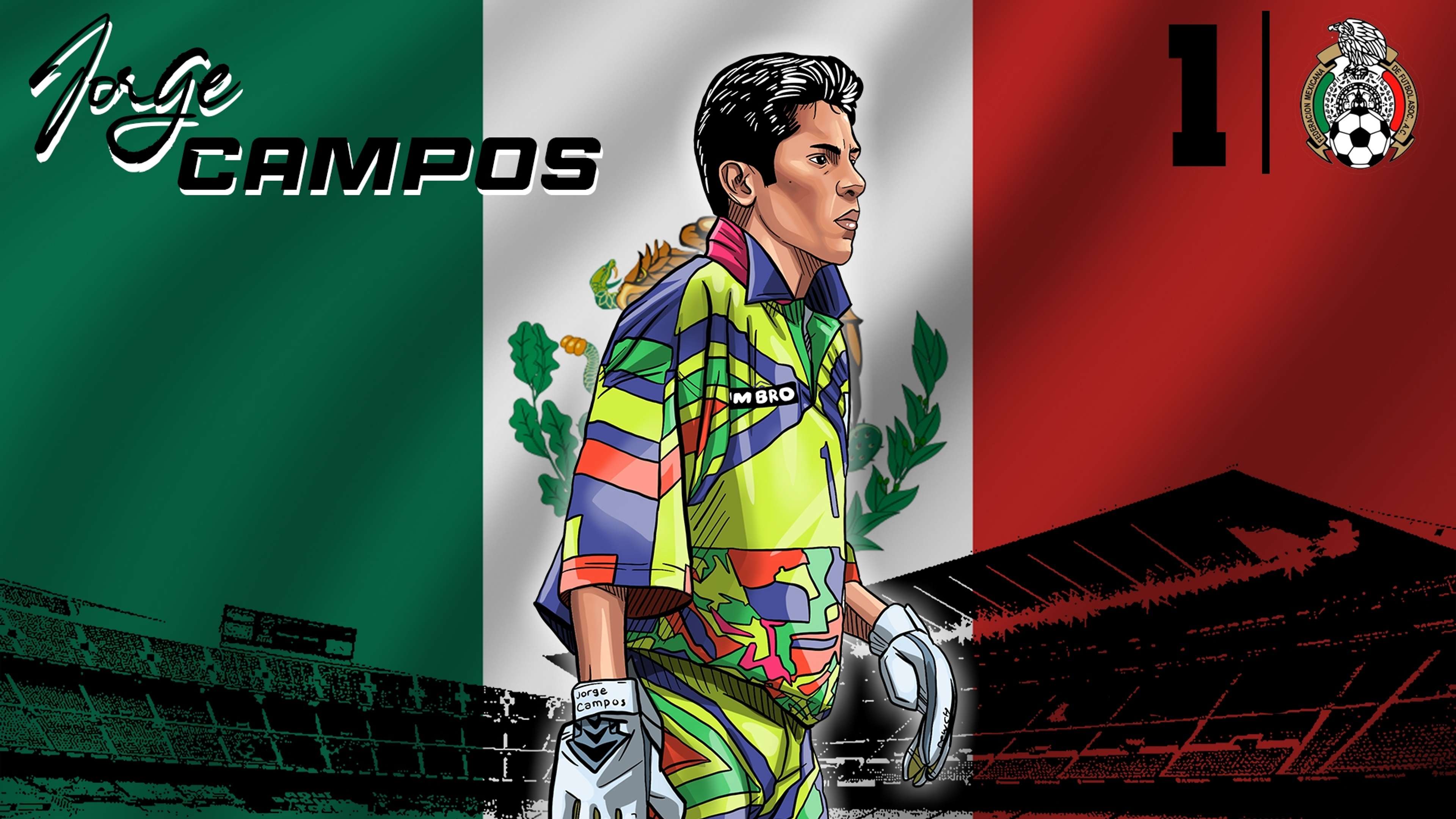Never before have there been so many football kits. Teams partner with merchandise providers to release third shirts, shirts for special occasions, bespoke warm-ups and entire fashion lines.
Yet for all the different colors, patterns and designs, there never will be another player with the style of Jorge Campos.
His jerseys were unique, the colors too loud and his plans and vision ultimately too customized for any of today’s brands to play ball.
"I liked to design. A friend of mine in Acapulco had his clothing line and we started to make them," Campos told El Heraldo de Mexico, citing the vibrant swimwear worn by surfers in the seaside town as inspiration.
"I asked him for some designs, to change this, not this, things I liked and little by little I improved them. If they said they were ugly, they were worse before."
While Umbro allowed Campos his bright designs at the 1994 World Cup, Mexican brand ABA Sport and the federation shut him down for 1998 – though 'El Immortal' and the team still made quite an impact with the legendary Aztec calendar shirts, Campos wearing the change strip to contrast with whichever color the field players were sporting.
A goalkeeper doing things his own way and being the peculiar one on a roster isn’t exactly headline news, but Campos certainly drew the eye – and not just because of his technicolor kits.
Stuck behind Adolfo Rios during his first season at Pumas, Campos requested to go up top and play as a forward.
He ended the campaign with 14 goals, and throughout his career would end up playing wearing the ‘wrong’ number, either in goal wearing No.9 or up top wearing No.1.
 Getty/GOAL
Getty/GOALIt was just one thing that made him unique. 'El Brody' stands just 5'6''.
As he earned the starting role at Pumas and with the Mexico national team, Campos began to earn international recognition, being named IFFHS’ third-best goalkeeper in the world in 1993 behind Manchester United’s Peter Schmeichel and Argentina ace Sergio Goycochea.
“It was special, especially because I didn’t have the right stature to be a goalkeeper,” Campos said.
“Now, the goalkeeper that can’t play outside the area doesn’t exist. I adapted to that.”
Campos is one of few players to reap such international acclaim in the 1990s and 2000s without ever leaving North America.
He went from Pumas to Atlante in Mexico City but was wooed to Major League Soccer when the league was first launched and was the backstop for the inaugural edition of the LA Galaxy.
The trip to MLS bridged two World Cup appearances, with Campos starting for El Tri in 1994 as it returned to the World Cup after being banned in 1990 for fielding overage players at a youth tournament and 1998.
In 1994, Mexico was drawn with a trio of European teams and things started poorly with a 1-0 loss to Norway, with attackers missing big chances and leaving Campos out to dry.
But the team bounced back with a win over Republic of Ireland and secured a famous draw with eventual finalist Italy, winning the group on goals scored.
But meeting Bulgaria in the Round of 16, Mexico again drew a European squad, this time going to penalties.
Campos saved the first shot diving to his right (though, it must be said he does it after coming way off his line... it was a different time), but Mexico’s first three takers failed to find the back of the net and Bulgaria moved on, the first in a string of last-16 exits for Mexico enduring to this day.
 Getty/GOAL
Getty/GOALIn 1998, Campos and Mexico ran into a Germany team that got goals from Jurgen Klinsmann and Oliver Bierhoff to leave the North Americans stranded in the first knockout game.
It came after a group stage in which Mexico’s defense wasn’t as stern as it was in 1994 but still got plenty out of Campos.
At both World Cups Campos’ style of play and his style of dress drew eyeballs from fans and rivals alike, as he leapt through the air, came out of the box to play with his feet and challenged attackers from what seemed like way too far off his line, usually getting down and palming a shot out of harm’s way.
“He was crazy, but in a good way. He was a super goalkeeper,” Germany goalkeeper Manuel Neuer told Fox Sports this year.
Iker Casillas said this week Campos did a bit too much hot-shotting in goal with his theatrical dives to be considered Mexico’s best-ever, though he stressed his respect for the shot-stopper. Another example of Campos doing anything possible to stand out.
Just a year later, Campos and Mexico would lift the Confederations Cup on home soil, with Campos helping a Mexico led by Cuauhtemoc Blanco beat Brazil and a young Ronaldinho to the title.
It is one of several trophies in Campos’ cabinet, along with a pair of Gold Cups and five straight awards for being the best goalkeeper in the Mexican first division.
 Getty/GOAL
Getty/GOALNow a commentator for TV Azteca, one of Mexico’s two television giants, Campos continues to march to the beat of his own drum.
He’s known for showing up in chanclas (sandals) and a full suit to call matches or make appearances.
With the striking visuals, the ability with the ball at his feet and his warm personality that would’ve translated well to social media, Campos is a player who truly was ahead of his time.
Then again, it’s probably good he came up when he did. Otherwise, the world never would’ve had the gift of his designs or the goals from a forward wearing No. 1.
His legacy, however, is clear. When Adidas unveiled Mexico’s classic green home jerseys and lovely indigenous-inspired away strip for this year’s tournament, it also rolled out an 'icon' kit paying homage to Campos.
It’s just a piece paying homage to an icon and one for fans to buy, not one Mexico No.1 Guillermo Ochoa will sport.
The design is just a little too out there for anyone, anyone except for Campos, of course.


